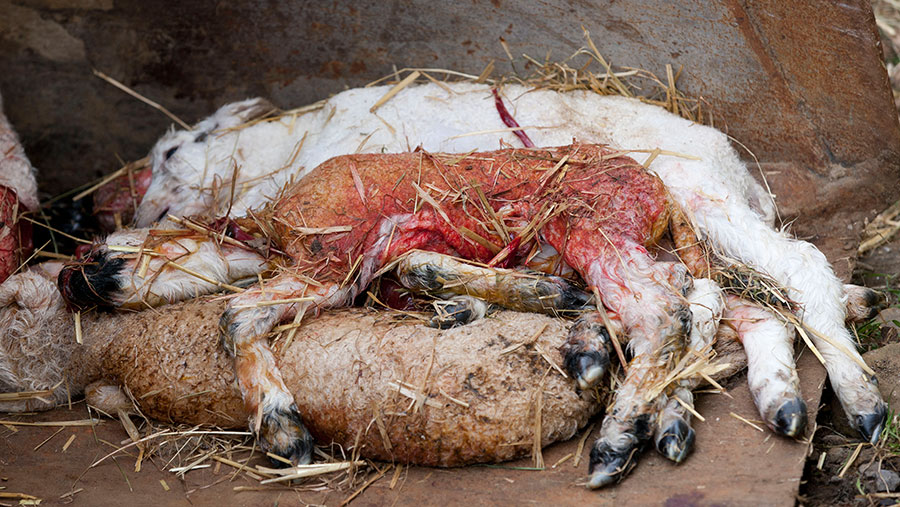Sheep farmers urged to post-mortem for Schmallenberg disease
 © Tim Scrivener
© Tim Scrivener Sheep farmers are being urged to post-mortem lambs with suspected Schmallenberg virus (SBV) to help reveal the extent of the increasing spread of the disease.
An industry statement said: “We have already heard of a number of cases and mainstream lambing and calving is only just starting.
“However, the Animal and Plant Health Agency (APHA) hasn’t received many samples so the true extent of the problem is not understood.”
Cases have been confirmed in Wales and the South West, south east and the north east of England.
In total 84 premises in England have been confirmed as having the disease during the winter of 2016-17. There have also been 25 premises identified in Wales.
See also: Top tips for preventing Schmallenberg virus risk in breeding stock
Early calving herds have also experienced calves with congenital defects. It is too late to vaccinate sheep that are due to lamb this spring, and there is currently no vaccine for lambs.
There will, however, be a vaccine available later this year. Determining the true extent of the spread of the disease will inform activity taken to protect against SBV going forward.
Farmers are therefore being urged to be vigilant during lambing and calving season, and look for lambs or calves with deformities so testing can be carried out to establish if SBV is the cause.
How is SBV transmitted?
SBV is transmitted by midge bites directly to sheep, cattle and goats. It is transmitted at a far higher rate than Bluetongue virus and therefore spreads more quickly through farms.
It is transmitted effectively at lower temperatures, which extends the season during which the virus is a threat.
How can farmers get tested?
Farmers should contact their vet to conduct the post-mortem. When APHA suspects SBV it will fund the testing for the virus, allowing farmers to confirm or rule out specific issues in that animal and the wider flock.
For more assistance on testing farmers can contact their local APHA Veterinary Investigation Centre or find the nearest post-mortem examination centre using APHA’s online postcode search tool.
APHA will also fund testing for cattle if reasonable steps have been taken to rule out other disease.
Signs to look out for
- Infected cattle can sometimes demonstrate symptoms of acute disease, such as loss of production, fever, loss of appetite, loss of condition, diarrhoea.
- Diseased lambs and calves will be born with severe malformations, such as rigidly fixed limbs or brain defects, which make delivery very difficult. In severe cases, limbs and spines may be twisted. Calves and lambs may also be weak and/or blind and appear like “dummies”.
